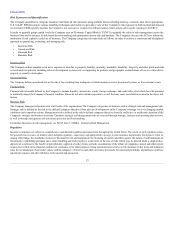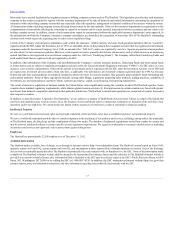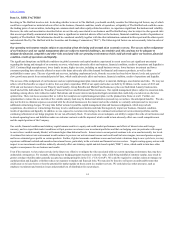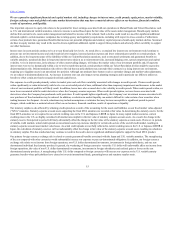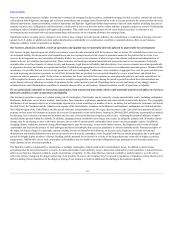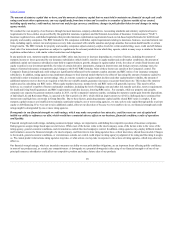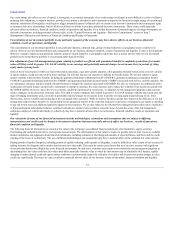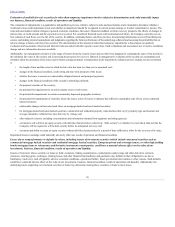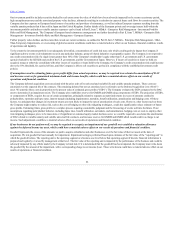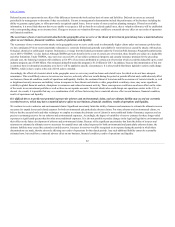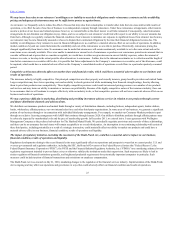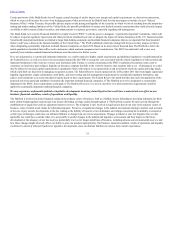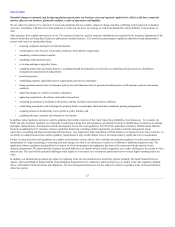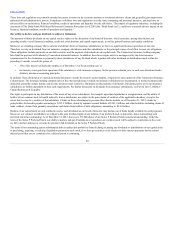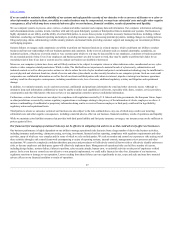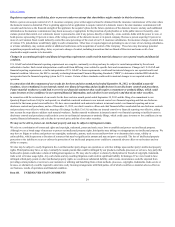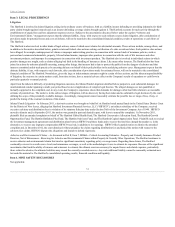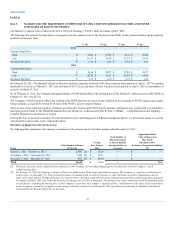The Hartford 2012 Annual Report Download - page 22
Download and view the complete annual report
Please find page 22 of the 2012 The Hartford annual report below. You can navigate through the pages in the report by either clicking on the pages listed below, or by using the keyword search tool below to find specific information within the annual report.
Table of Contents
Deferred income tax represents the tax effect of the differences between the book and tax basis of assets and liabilities. Deferred tax assets are assessed
periodically by management to determine if they are realizable. Factors in management's determination include the performance of the business including the
ability to generate capital gains, to offset previously recognized capital losses, from a variety of sources and tax planning strategies. If based on available
information, it is more likely than not that we are unable to recognize a full tax benefit on realized capital losses, then a valuation allowance will be established
with a corresponding charge to net income (loss). Charges to increase our valuation allowance could have a material adverse effect on our results of operations
and financial condition.
The occurrence of one or more terrorist attacks in the geographic areas we serve or the threat of terrorism in general may have a material adverse
effect on our business, financial condition, results of operations and liquidity.
The occurrence of one or more terrorist attacks in the geographic areas we serve could result in substantially higher claims under our insurance policies than
we have anticipated. Private sector catastrophe reinsurance is extremely limited and generally unavailable for terrorism losses caused by attacks with nuclear,
biological, chemical or radiological weapons. Reinsurance coverage from the federal government under the Terrorism Risk Insurance Program Reauthorization
Act of 2007 (“TRIPRA”) is also limited. Although TRIPRA provides benefits in the event of certain acts of terrorism, those benefits are subject to a deductible
and other limitations. Under TRIPRA, once our losses exceed 20% of our subject commercial property and casualty insurance premium for the preceding
calendar year, the federal government will reimburse us for 85% of our losses attributable to certain acts of terrorism which exceed this deductible up to a total
industry program cap of $100 billion. Our estimated deductible under the program is $1.2 billion for 2013. In addition, because the interpretation of this law
is untested, there is substantial uncertainty as to how it will be applied to specific circumstances. It is also possible that future legislative action could change
TRIPRA, which is due to expire at the end of 2014, unless extended.
Accordingly, the effects of a terrorist attack in the geographic areas we serve may result in claims and related losses for which we do not have adequate
reinsurance. This would likely cause us to increase our reserves, adversely affect our results during the period or periods affected and, could adversely affect
our business, financial condition, results of operations and liquidity. Further, the continued threat of terrorism and the occurrence of terrorist attacks, as well
as heightened security measures and military action in response to these threats and attacks or other geopolitical or military crises, may cause significant
volatility in global financial markets, disruptions to commerce and reduced economic activity. These consequences could have an adverse effect on the value
of the assets in our investment portfolio as well as those in our separate accounts. Terrorist attacks also could disrupt our operations centers in the U.S. or
abroad. As a result, it is possible that any, or a combination of all, of these factors may have a material adverse effect on our business, financial condition,
results of operations and liquidity.
It is difficult for us to predict our potential exposure for asbestos and environmental claims, and our ultimate liability may exceed our currently
recorded reserves, which may have a material adverse effect on our business, financial condition, results of operations and liquidity.
We continue to receive asbestos and environmental claims. Significant uncertainty limits the ability of insurers and reinsurers to estimate the ultimate reserves
necessary for unpaid losses and related expenses for both environmental and particularly asbestos claims. For some asbestos and environmental claims, we
believe that the actuarial tools and other techniques we employ to estimate the ultimate cost of claims for more traditional kinds of insurance exposure are less
precise in estimating reserves for our asbestos and environmental exposures. Accordingly, the degree of variability of reserve estimates for these longer-tailed
exposures is significantly greater than for other more traditional exposures. It is also not possible to predict changes in the legal and legislative environment and
their effect on the future development of asbestos and environmental claims. Because of the significant uncertainties that limit the ability of insurers and
reinsurers to estimate the ultimate reserves necessary for unpaid losses and related expenses for both environmental and particularly asbestos claims, the
ultimate liabilities may exceed the currently recorded reserves. Increases in reserves would be recognized as an expense during the periods in which these
determinations are made, thereby adversely affecting our results of operations for the related periods. Any such additional liability cannot be reasonably
estimated now, but could have a material adverse effect on our business, financial condition, results of operations and liquidity.
22


